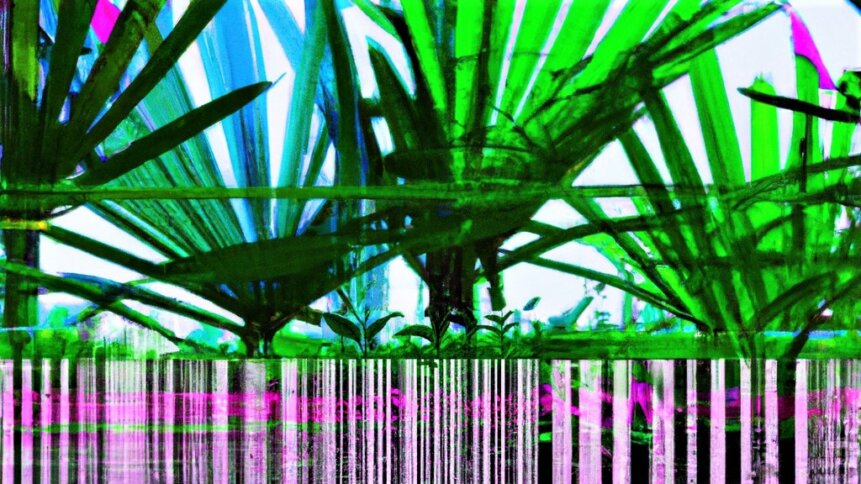Silk barcodes scanned by mobile phones secure seeds

|
Getting your Trinity Audio player ready...
|
There’s more to silk than just the scarves and pyjamas worn by celebrities through the ages, such as Ludwig Van Beethoven, Audrey Hepburn, Andy Warhol, and many others. Research conducted by engineers at MIT, US, has shown that silk has security potential too, with microparticles of the material capable of generating tiny physical unclonable functions (PUFs) to protect seeds from counterfeiters. The PUFs – which are described in the latest issue of Science Advances – can be used to identify the host product, like using a barcode, but have the anti-counterfeiting property of being resistant to copying.
Silk barcodes
To test the idea, the team – which included members of the Energy-Efficient Circuits and Systems Group – fabricated silk barcodes with security features and applied them to apple, corn, eggplant, tulip, and zucchini seeds. The spectral PUF tags are created using silk microparticles drop-cast onto the seed surface. Images of the silken tags are gathered using an affordable 1920 x 1080 pixel resolution pocket microscope and sent to a mobile phone via built-in Wi-Fi functionality.
To process the images and convert the data into a PUF, an edge detection algorithm is first applied to isolate the arrangement of microparticles that comprise the silk barcode within the digital photograph. Next, images are resized into a 400 x 400 pixel version, luminance is reduced, contrast enhanced, and a greyscale filter is applied. The processing steps help to neutralize any lighting effects that may negatively influence the final result, which takes the form of an 8 x 8 array of intensity values ranging from 0 to 63.
These intensity values are then mapped to the PUF using a challenge and response protocol built around an AES cryptographic key. The researchers submitted codes derived from the silk barcodes to a series of NIST tests for randomness to verify the unpredictability of the PUF. “The PUF codes are considered to have desirable randomness if the pass rate is greater than 95% for each of the eight tests,” writes the team in their paper. “As shown, the spectral PUF codes successfully passed all the randomness tests.”
Counterfeit concerns
Counterfeiting is of concern across a wide range of industrial sectors from luxury goods to pharmaceuticals. And widescale fraudulent activity costs manufacturers dearly in terms of lost revenue. What’s more, in the case of counterfeit seeds, there could be nutritional concerns, as well as risks to food security if crops perform poorly and deliver low yields. Suppliers also face reputational damage if large amounts of counterfeits are allowed to permeate through supply chains. Customers of agri-food businesses could turn to competitors if they mistakenly believe that poorly performing fake seeds are genuine.
Common responses by industry to combat product fraud include the addition of difficult-to-replicate holographic tags, security watermarks, as well as barcodes and QR codes for traceability. And the US-based group of scientists and engineers hopes that its silk barcodes will sit alongside these, giving firms in the agri-food sector more options. The team cites a report by the World Bank, which digs into enabling the business of agriculture and estimates that in some parts of the world up to half of crop seeds sold to farmers may not be the genuine article, which highlights the scale of the problem. And it should be added that poor-performing seeds affect other agricultural inputs too, encouraging greater uses of water and fertilizer.
Tagging is applied to retail packaging, but some counterfeiters are able to duplicate this and fill bags with fake seeds. Alternatively, as the researchers mention, seeds may be sold loose at markets. And in both of these scenarios, the addition of silk barcodes that offer security functionality could help to distinguish real products from fakes. In terms of practical strategies, larger seeds such as tulip bulbs could be individually labeled. For cases where it’s impractical to mark each item in the batch, so-called golden seeds (which do carry security features) could be included and used in conjunction with tamper-proof packaging.
Shelf-life discovery
Benedetto Marelli, who’s part of the MIT team looking at solutions to bolster agricultural security and strengthen trust between manufacturers and customers in supply chains, had an interesting introduction to the application of silk to food. In 2022, he won the inaugural BioInnovation Institute & Science Prize for Innovation for harnessing silk design to extend the shelf-lives of staple foods like leafy greens and meats. The discovery came about when he substituted silk for chocolate in a cooking experiment involving strawberries. Visually, the result didn’t have restaurant appeal, so he abandoned the idea. But days later, he observed that the silk-covered strawberries still appeared fresh, whereas the unused fruit had spoiled.
Marelli soon realized that his serendipitous discovery could have a positive impact on the agri-food sector. And he demonstrated silk-coated bananas that stayed ripe for days longer than untreated versions. Now, having teamed up with experts from the Energy-Efficient Circuits and Systems Group, he can add mobile phone-readable silk-based security technology to the list of benefits that silk brings to food production.









